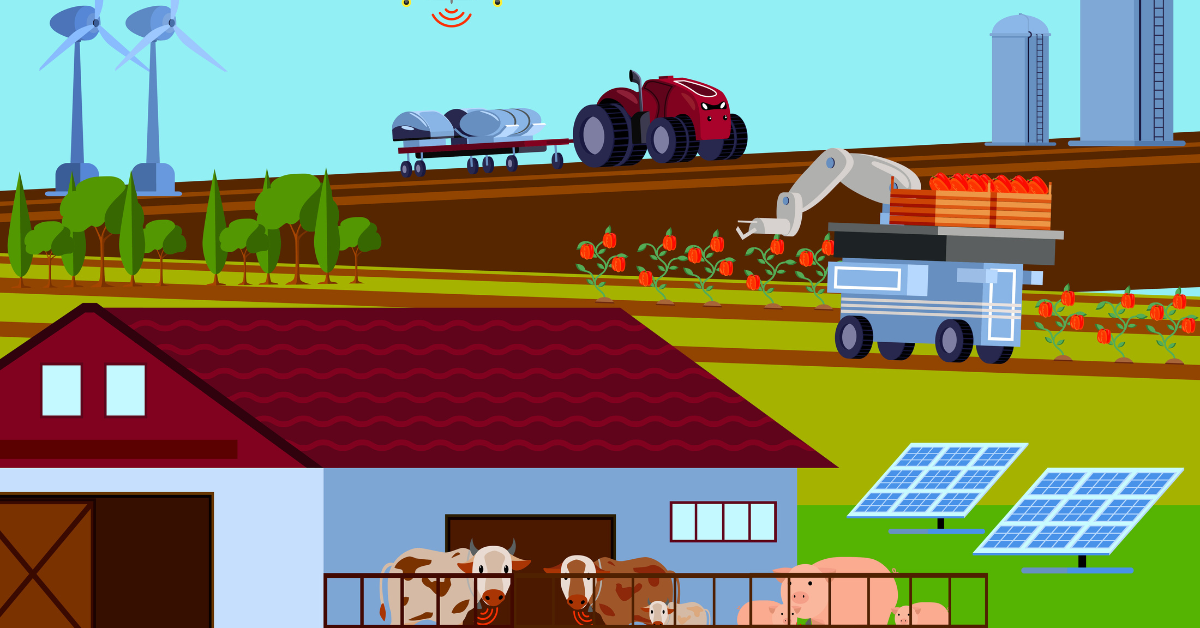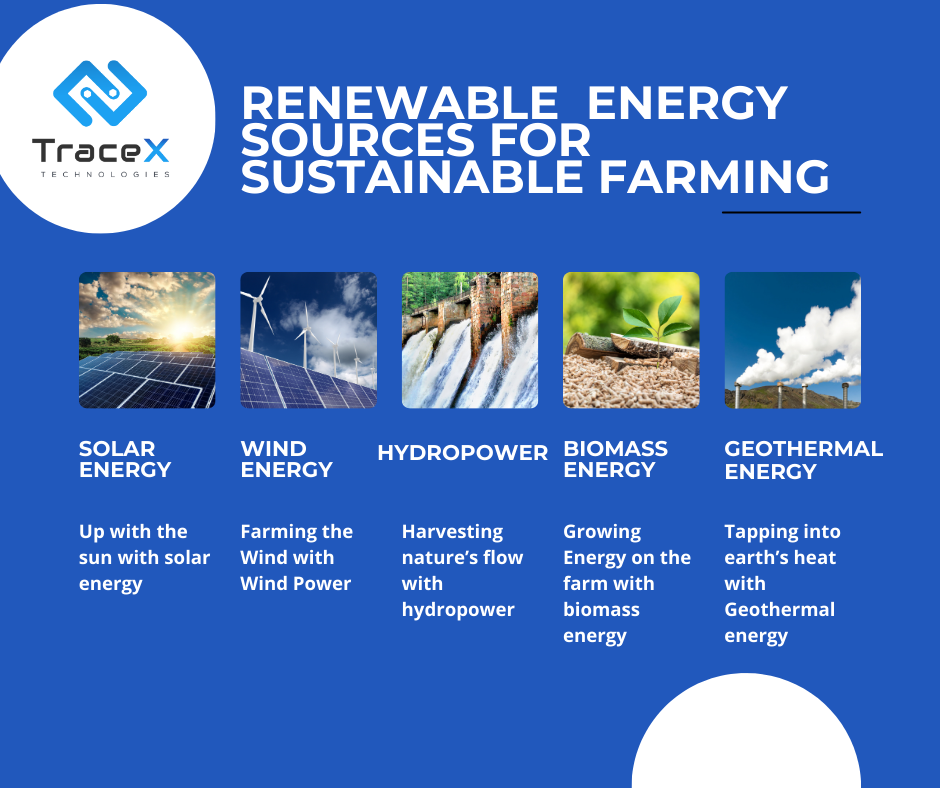Contact: +91 99725 24322 |
Menu
Menu
Quick summary: Explore the transformative journey towards sustainable agriculture with our blog on Renewable Energy Solutions for Sustainable Farming. Learn how innovative practices harness wind, solar, hydropower, and geothermal energy, cultivating a greener and more environmentally friendly future for farming.

Embark on a green revolution in agriculture with our blog on Renewable Energy Solutions for Sustainable Farming! As the agricultural landscape evolves, the need for eco-friendly practices becomes more apparent than ever.
Food production and processing currently accounts for one-third of global energy consumption, which is still heavily dependent on fossil fuels.
In this exploration, we unravel the pivotal role of renewable energy in fostering sustainable farming. From addressing environmental concerns to enhancing efficiency, join us on a journey to discover how innovative energy solutions are reshaping the future of farming. Unearth the power of sustainability and delve into the strategies that promise to make agriculture not just productive but also planet friendly.
Let’s sow the seeds of change together.
Modern farming demands significant energy inputs. This includes power for machinery, irrigation, heating, and cooling in controlled environments. Energy-intensive practices can strain resources and contribute to greenhouse gas emissions. Thus, sustainable agriculture seeks to reduce energy consumption and incorporate renewable sources to mitigate environmental impact.
Traditional energy sources, such as fossil fuels (coal, oil, natural gas), are unsustainable due to their finite supply, environmental damage, and contribution to climate change. Their extraction and combustion release greenhouse gases, deplete resources, and harm ecosystems. Transitioning to renewable energy is essential to mitigate these issues and ensure long-term sustainability.
Renewable energy plays a pivotal role in mitigating environmental impact by significantly reducing greenhouse gas emissions and air pollutants. Sources like solar, wind, and hydropower generate power without the harmful byproducts associated with fossil fuels. This transition to clean energy is vital for combating climate change and preserving the planet’s ecosystems.

Renewable energy sources offer farms diverse and sustainable ways to meet their energy needs. Here’s a look at some of the key options:
Solar panels convert sunlight into electricity, providing a reliable source of energy for farms. Solar systems can be installed on rooftops, open fields, or integrated into agricultural structures. They reduce electricity bills and offer long-term cost savings.
Advantages:
Limitations:
Wind turbines harness the power of the wind to generate electricity. Farms with sufficient wind resources can install wind turbines, often in collaboration with local energy grids. Wind energy is intermittent, but it can be a valuable source of renewable power, especially in rural areas.
Advantages:
Limitations:
Biomass, such as crop residues or dedicated energy crops, can be converted into bioenergy through processes like anaerobic digestion or combustion. This provides on-site energy generation and reduces waste while promoting resource efficiency.
Advantages:
Limitations:
Farms near rivers or streams can utilize small-scale hydropower systems. Water flows turn turbines to produce electricity. While permitting and infrastructure can be challenging, it offers a consistent source of energy.
Advantages:
Limitations:
Geothermal heat pumps can provide heating and cooling for farm buildings. This technology relies on the stable temperature of the Earth below the surface, reducing the energy required for climate control.
Advantages:
Limitations:
Implementing renewable energy on farms offers several compelling benefits.
Implementing renewable energy sources on farms yields a multitude of positive impacts.
Farmers considering renewable energy adoption must navigate several challenges.
Overcoming these challenges requires careful financial planning and navigating regulatory processes.
Emerging technologies in sustainable farm energy include advanced sensors and IoT applications for precise resource management, such as water and energy use. Machine learning and AI-driven systems optimize crop and livestock management. Energy storage solutions like improved batteries and grid integration enhance energy reliability. Sustainable biogas production from agricultural waste and algae-based biofuels are also gaining traction. Moreover, the integration of blockchain technology for transparent and efficient energy transactions within agricultural communities is an emerging trend to watch.
Advancements in agriculture, such as precision farming and AI-driven monitoring, will further enhance sustainability. These technologies allow for more efficient resource use, reducing waste and environmental impact. Renewable energy integration, like advanced solar and wind systems, will increase farms’ energy independence and reduce greenhouse gas emissions. Sustainable practices, driven by data and innovation, will help meet growing food demands while minimizing the ecological footprint.
TraceX solutions play a pivotal role in the meticulous tracking of sustainable farming practices, especially those integrated with renewable energy sources. By harnessing the power of blockchain traceability, TraceX ensures transparent and accurate documentation of eco-friendly initiatives in agriculture. From monitoring the utilization of renewable energy systems to tracking sustainable farming techniques, our platform provides a comprehensive overview.
In conclusion, the transition to renewable energy and the adoption of emerging technologies are pivotal steps in promoting the sustainability of farming. These advancements reduce costs, carbon footprints, and dependency on finite resources. As the agricultural sector evolves, harnessing innovative solutions will not only improve the efficiency and resilience of farming but also play a vital role in addressing the global challenges of food security and environmental conservation. By embracing these technologies, farmers can cultivate a brighter, greener future for agriculture.
